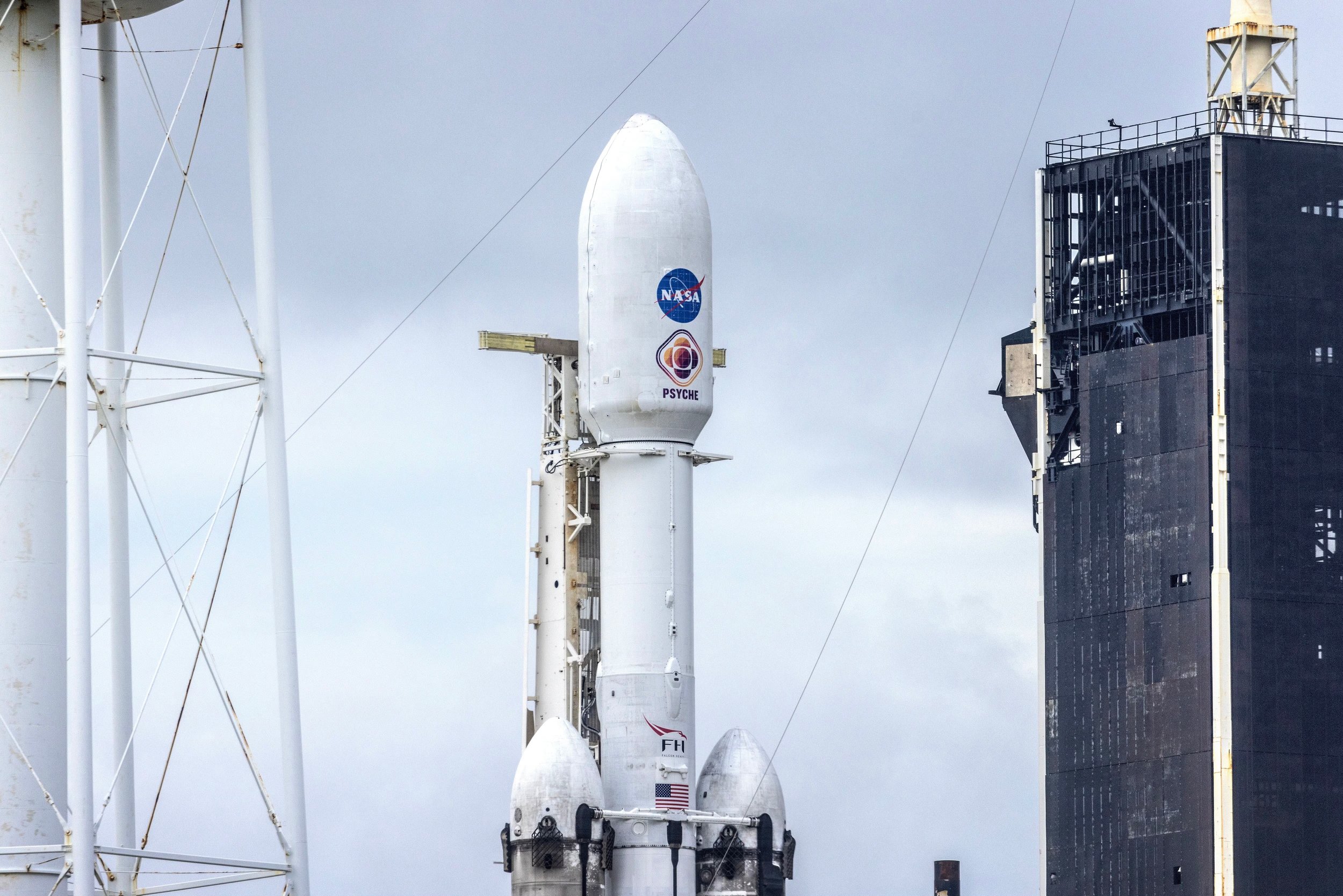Heavy Metal
Eyes once again turned to the skies last month as the morning of October 13 saw the launch of NASA's Psyche spacecraft from the famed Kennedy Space Center in Florida, launch site of the first ever moon landing. The Psyche spacecraft, its main body about the size of a small van (though presumably with less Twix wrappers and old copies of The Sun in the footwell...), is powered by solar electric propulsion, its solar arrays covering roughly the area of a singles tennis court once unfurled in zero gravity flight. To leave Earth's obit, a little push was needed in the form of SpaceX's Falcon Heavy, the incredible re-deployable rocket which stands to revolutionise notions of space exploration by vastly lowering costs and reminding us that its company's founder, Elon Musk, is capable of so much more than just a slew of alt-right dog whistles, public meltdowns and large scale Twitter vandalism.
After a few minutes of heavenly ascent, Falcon Heavy's twin boosters separated from the central core (returning safely to the ground), followed by the central fallaway rocket roughly an hour into the flight, leaving Psyche to travel under its own power for the next... ooooh... six or so years as it voyages towards an asteroid of the same name located in the main asteroid belt between Mars and Jupiter. The spacecraft's due to be captured by its target asteroid's gravity in late July 2029, beginning its primary mission in August. For two years after that it will orbit Psyche, employing a magnetometer, gamma-ray and neutron spectrometer and multispectral imager to not just photograph the great rock (images will be relayed to Earth as soon as the two Psyches meet) but map its surface and collect various data to better determine its composition.
And why such interest in the composition of a big potato-shaped rock? (173 miles at its widest point in fact) Well, we already know it's not just a rock but an M-type asteroid – a primarily metallic body. Whilst Spectroscopy can tell us this by analysing the light spectrum given off by the big spud, its spectral fingerprint does not tell us just which metals are in play. Further methods such as radar reveal Psyche's surface is highly reflective with many scientists believing it's likely high in nickel and iron, common metals among asteroids. Others, such as Wendy Caldwell of Los Alamos National Laboratory have analysed its various impact craters to surmise it could be primarily monel, a metal made of nickel and copper.
Despite the six years we'll have to wait to better understand its particulars, headline-worthy details of the US $450 million endeavour have already spilled, with an estimation of Psyche's value based on its size landing squarely in mind-boggling territory, as so much associated with the relative infinities of space does. Just the iron believed to be contained in Psyche would fetch 10,000 quadrillion dollars at today's market rates, far exceeding the current Gross World Product. Of course harvesting that would entail towing an asteroid weighing several trillion tons half a billion miles back to Earth... and then hoping to find a parking space! Whilst that won't be happening any time soon, companies and investors are already beginning to take the idea of asteroid mining seriously. History has taught us again and again that scientific and technological progress can take exponential leaps in relative blinks of an eye. It's believed small scale asteroid mining could become a reality before the century is out, with data gathered from the Psyche mission likely applied to harness resources from smaller, closer and therefore more tangible M-type near Earth objects such as 1986 DA and 2016 ED85.
Beyond the buzz worthy talk of impossible riches, the main draw of the asteroid Psyche is the mysteries it could unlock for the scientific community. It appears the heavenly body, named after the Greek goddess of the soul may in fact have begun life as a planetesimal, a building block of a rocky planet whose rough treatment amid countless collisions during the formative years of the solar system blasted away its rough exterior, leaving a metal core similar to the Earth's. By analysing Psyche, we hope to learn more about how rocky planets like our own form and then separate into defined layers of core, mantle and crust. Since we can't actually bore to the Earth's core, the unimaginable pressure and temperatures far beyond our most robust technological reach, we stand a better chance of finding the answers we desire in the vacuum of space.
Whilst the Psyche team at NASA hope from the mission to better understand the role of planetesimals in the development of gargantuan rocks like our own, the equally exciting possibility remains that more nuanced research reveals Psyche is not in fact an exposed core, but a never before seen type of primordial solar system object. Either way, many extremely brainy people will be biting their nails for the next few years. The hope is that missions such as this will reignite the general public's interest in the wonders of the cosmos.
www.science.nasa.gov/mission/psyche is the gateway to a whole universe of information about the mission, with activities, lessons, videos and ways to get involved, and if you're the type of person who enjoys watching your plane's snail-like progress across the on-screen map during a flight, you're in luck. NASA's Eyes on the Solar System 3D web tool lets you track the spacecraft's epic journey towards Psyche in real time. Enjoy the next six years !!



